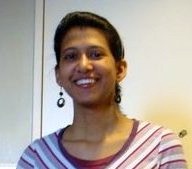
Sonia Gupta
Visiting Student Research Collaborator
Dept. Civil & Env. Eng.
Eng. Quad. E-226
Email: soniag@princeton.edu, sgupta@tue.nl
Project: NaCl damage in porous building materials
My name is Sonia Gupta. At present, I am a fourth year PhD student in the department of applied physics, Technical University Eindhoven, The Netherlands. My research goal is to understand NaCl damage mechanism and to explore the effectiveness of ferrocyanide ions as a preventive method against NaCl damage.
It is well known that salt crystallization inside porous building materials and valuable monuments causes their damage. Sodium chloride (NaCl) is one of the widely distributed salts in porous building materials. Various studies have been done in the past to define NaCl damage mechanism. However, until now the mechanism that governs damage is poorly understood and no single conclusion has been drawn. In order to find a solution for the damage problem, a better understanding of the damage mechanism is required. This is one of the aims in my PhD research work. I am also investigating the use of ferrocyanide ions as a preventive method against NaCl damage. Specifically, my focus is to study the influence of ferrocyanide ions on the transport and crystallization processes of sodium chloride in porous building materials and to test their effectiveness under different environmental conditions (e.g. relative humidity and air flow rates).
During my stay in Princeton, I will work with Prof. George Scherer. He is active in the field of salt weathering of cultural heritage and building materials. My focus will be to understand the mechanics of NaCl damage under his supervision. I want to perform repeated drying and wetting cycles on salt contaminated materials and monitor the stresses generated due to these repeated cycles. Apart from this, I also want to understand how the growth of salt crystals occurs in a network of cylindrical pores. The focus will be to design and perform a set of experiments to study if the growing salt crystal is able to branch into the other pores at the intersection point of the pore network. Simultaneously, I also want to learn about few experimental set-ups used in Prof. Scherer’s research laboratory like warping test, capillary rise test.